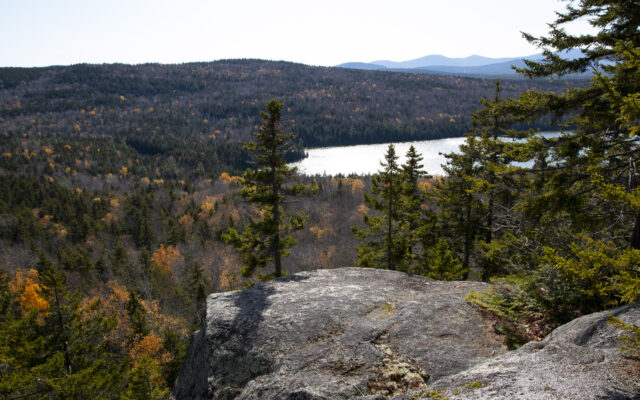
How to enjoy a beautiful hike during Maine’s drab ‘stick season’
By Aislinn Sarnacki
“All the leaves are on the ground,” I lamented after a recent rainstorm knocked the fall foliage from the trees.
My husband, Derek, teased me for being a grouch. Meanwhile, soggy maple leaves stuck to my boots. In a few days, their vibrant colors would fade as they browned, dried up and crumbled. The jack-o’-lanterns would rot. The mums would wilt.
OK, maybe I need an attitude check. After all, there’s plenty of beauty to be found in nature after the razzle dazzle of foliage season is done. And Eeyore is only ever cute in small doses.
In Maine, there’s a drab — sorry, “muted,” “colorless,” “understated” — period of time between fiery fall and winter wonderland. Usually this period lasts through November and well into December. We always hope for a white Christmas, but there’s no guarantee.
A couple days ago, my mother informed me that this stretch of time actually has a name: stick season. (Moms are full of fun facts like that.)
She heard the term from a photographer friend. And right now, as I stare up at the bare branches thatched over a pale blue sky, I can say that “stick season” is an apt description.
Skeletal trees surround my house. Furthermore, sticks knocked down by the wind litter the ground. Just like the poor leaves.
(Snap out of it, Aislinn.)
I’m a year-round hiker. I explore the Maine wilderness during all seasons. So I have a few tips when it comes to finding beauty in the very brown, twiggy time we’re experiencing right now.
First of all, Maine is home to a lot of evergreens, which live up to their name. Pine, spruce and fir trees. Their needles, which are actually types of leaves, stay green year round. Sure, they shed eventually. That’s why you see brown needles on the ground. But they grow right back. They don’t bail all at once in the fall like the leaves of deciduous trees. They stick around, adding shades of emerald to the landscape. Evergreens also offer shelter from the cold winds of winter.
So, find an evergreen forest and go for a walk. Spruce-fir forests crowd the coast and cover many of Maine’s mountains. Maine’s official state tree is the white pine. They’re easy to find and hard to miss, being so wonderfully tall. In fact, I challenge you to go for a walk in Maine and not see an evergreen tree.
Speaking of things that stay green: Mossy forests are enchanting year round, and Christmas ferns seem to thrive in the cold.
When you find yourself in a deciduous forest — with all the bare branches and sticks — that’s an excellent time to look for birds and other wildlife. With all the leaves on the ground, you can see far into the woods, spotting animals from afar.
Many birds fly south to overwinter in warmer areas, but quite a few species stick around
.
In the woods around my house, the year-round feathered residents include blue jays, tufted titmice, crows, mourning doves, white-breasted nuthatches, black-capped chickadees, dark-eyed juncos, barred owls and brown creepers. But my favorite are the hairy, downy and pileated woodpeckers.
By now, most of the mushrooms have shriveled up. But keep an eye out for hardy tree mushrooms such as red-belted polypores and artist conks. They stick around throughout the winter. Bright orange jelly fungi is another species you might see, and certain lichen species are also vibrant this time of year.
With fall rain comes rushing streams, brooks and waterfalls. Swirling currents that froth and bubble are about as mesmerizing as the flames in a campfire. Plenty of public trails visit these beautiful water features. A few that come instantly to mind? The Little River Community Trail in Belfast, Peter’s Brook Trail in Blue Hill, and the Messer Pond Road in Katahdin Woods and Waters National Monument.
Also, before long, we will start to see ice form along the edges of these waterways, and the patterns that ice creates as it forms can be especially lovely.
Blueberry fields are pretty this time of year. They retain a red hue.
Sunset and sunrises are stunning no matter the month. This time of year, as days shorten, it’s easy to wake up in time to see the sunrise, even if you don’t consider yourself a morning person. Right now, sunrise is around 7:20 a.m. — it will come an hour earlier starting with Eastern Standard Time on Sunday — while back in June it was around 5 a.m.
Now is also a great time to embrace the beauty of Maine’s coastline. The ocean is just as big and beautiful as it ever was, and the beach crowds are gone. I bet you could find some frosty sea glass or spy a few seabirds.
See, I can be optimistic, Derek.
You know what will help boost my mood even more? Being outside, in the fresh air. I think I’ll go do that now.